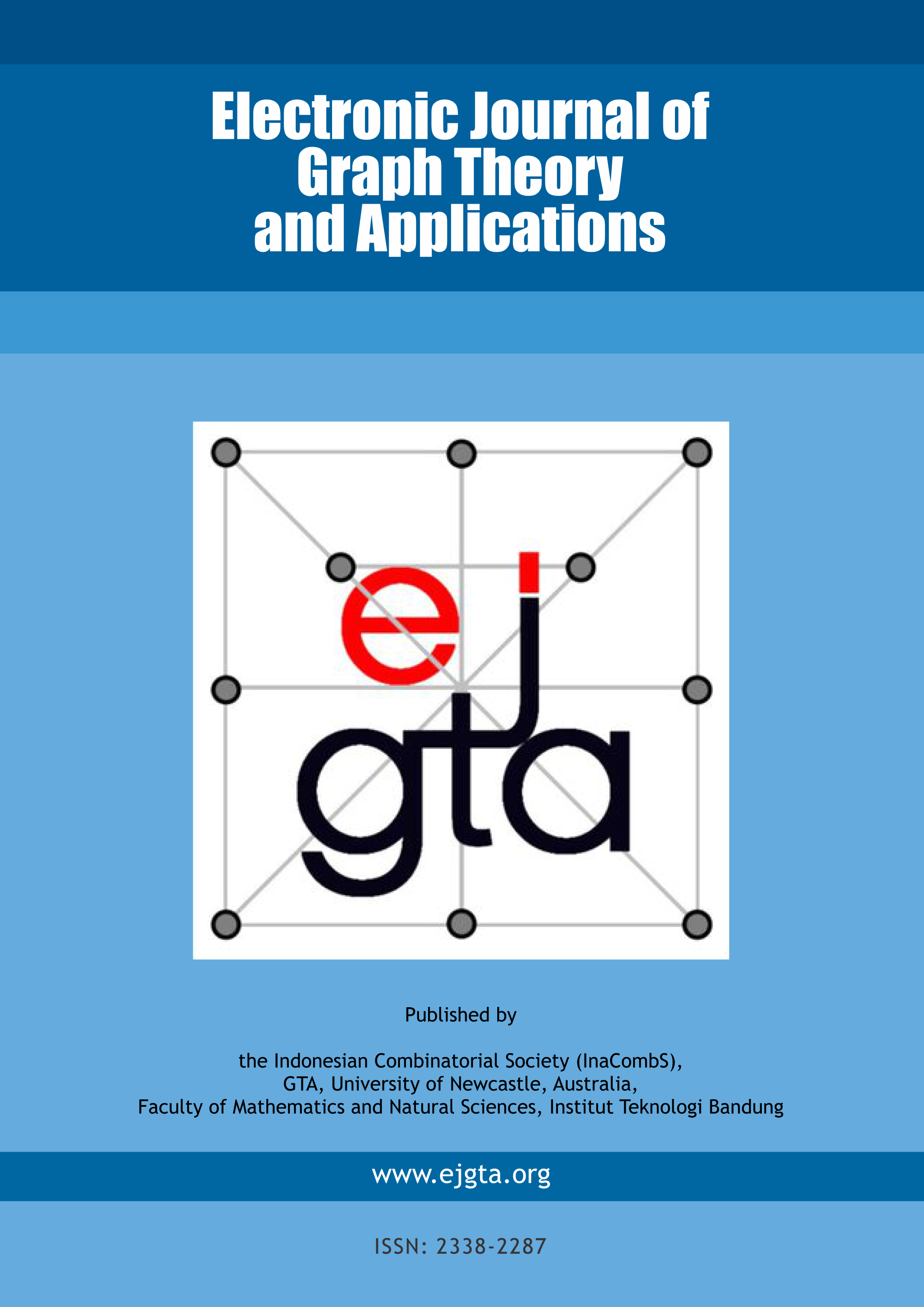The Italian bondage and reinforcement numbers of digraphs
Abstract
Keywords
Full Text:
PDFDOI: http://dx.doi.org/10.5614/ejgta.2025.13.2.9
References
K. Carlson and M. Develin, On the bondage number of planar and directed graphs, Discrete Math. 306 (2006) 820–826.
G. Chartrand, F. Harary, and B.Q. Yue, On the out-domination and in-domination numbers of a digraph, Discrete Math. 197/198 (1999) 179–183.
M. Chellali, T.W. Haynes, S.T. Hedetniemi, and A.A. McRae, Roman {2}-domination, Discrete Appl. Math. 204 (2016) 22–28.
G. Hao, S.M. Sheikholeslami, and S. Wei, Italian reinforcement in graphs, IEEE Access 7 (2019) 184448–184456.
M.A. Henning and W.F. Klostermeyer, Italian domination in trees, Discrete Appl. Math. 217 (2017) 557–564.
J. Huang, J.W. Wang, and J.M. Xu, Reinforcement numbers of digraphs, Discrete Appl. Math. 157 (2009) 1938–1946.
H. Gao, P. Wang, E. Liu, and Y. Yang, More results on Italian domination in Cn □ Cm, Mathematics 8 (2020) 465.
H. Gao, T.T. Xu, and Y.S. Yang, Bagging approach for Italian domination in Cn □ Pm, IEEE Access 7 (2019) 105224–105234.
K. Kim, The Italian domination numbers of some products of directed cycles, Mathematics 8 (2020) 1472.
Z.P. Li, Z.H. Shao, and J. Xu, Weak {2}-domination number of Cartesian products of cycles, J. Comb. Optim. 35 (2018) 75–85.
A. Moradi, D.A. Mojdeh, and O. Sharifi, Roman {2}-bondage number of a graph, Discuss. Math. Graph Theory 40 (2020) 255–268.
L. Ouldrabah, M. Blidia, and A. Bouchou, Roman domination in oriented trees, Electron. J. Graph Theory Appl. 9 (2021) 95–103.
V.D. Samodivkin, Upper bounds on the bondage number of a graph, Electron. J. Graph Theory Appl. 6 (2018) 1–16.
Z. Stepien, A. Szymaszkiewicz, L. Szymaszkiewicz, and M. Zwierzchowski, 2-Rainbow domination number of Cn □ C5, Discrete Appl. Math. 107 (2014) 113–116.
A. Rahmouni and M. Chellali, Independent Roman {2}-domination in graphs, Discrete Appl. Math. 236 (2018) 408–414.
L. Volkmann, Italian domination in digraphs, J. Combin. Math. Combin. Comput., 111 (2019) 269–278.
L. Volkmann, The Italian domatic number of a digraph, Commun. Comb. Optim. 4 (2019) 61–70.
Refbacks
- There are currently no refbacks.
ISSN: 2338-2287

This work is licensed under a Creative Commons Attribution-ShareAlike 4.0 International License.



